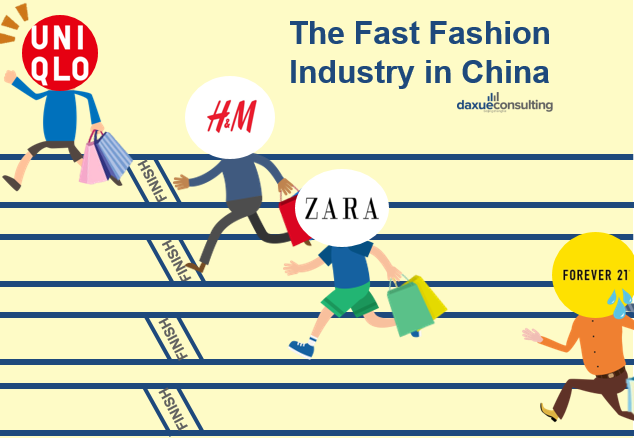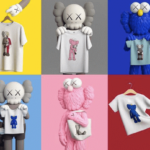The Fast Fashion Industry in China Dresses the New Mix & Match Generation | daxue consulting
The fast fashion market in China is evolving, here is what brands should know
Sales in China’s apparel market have reached over CNY 2,077 billion in 2018, growing at 7.8% YOY, which is the fastest growth rate since 2014. It is predicted that in 2019, China will replace the US as the world’s largest apparel market. However, despite the promising growth of the apparel market in China, the fast fashion market in China is facing the challenges of both domestic competition and quality-oriented consumption upgrade. The rapid evolution of the fast fashion market in China is not without casualties. One of the most notable is the US fast fashion retailor Forever 21, which withdrew from China in 2019.
In 2015, sales of the fast fashion industry in China reached CNY 534.7 billion, up 7.4% from 2014 and with a 14.5% CAGR growth from 2010-2015. Fast fashion in China accounted for most of that growth, as international brands continued their aggressive expansion and gained more share of the market. Unlike luxury brands, fast fashion houses do not follow traditional seasons timeline for design. Instead, they design, manufacture, and release new products whenever a trend appears. The low prices, new fashionable designs, and perceived quality keep customers coming back more frequently than traditional brands. This article will provide an overview of the fast fashion industry in China and the expansion strategies in China of multiple international brands. As competition in China’s fast fashion market in 2019 has become tighter, we analyse both the success and the shortcomings of foreign brand strategies.
Emerging and trending industry in the Fast Fashion Industry in China
The fast fashion industry in China is in significant growth. The three major fast fashion brands in China are Zara, Uniqlo, and H&M. Uniqlo opened its first fashion store in China (Shanghai) in 2002, followed by Zara and H&M, which entered China fast fashion market in 2006, 2007, respectively. Despite a deceleration of the economy, the fast fashion industry in China is still flourishing as young Chinese are increasingly willing to spend more on apparel. Betting on the world’s largest market, Gap followed suit in 2010 with other American clothing retailers. Other companies with ambitious expansion plans include European company C&A Mode, which has more than 40 stores and plans to have 150 in 2016. The Japanese brand Uniqlo, one of the first entrants into the scene of the fast fashion industry in China, plans to open 100 new fashion stores in China and already holds 2.4% of all apparel and retail footwear values. For European fashion brands, it is also a precious opportunity, especially for French and Italian groups that have already a strong brand identity.
Fast fashion in China is also emerging out of tier-1 cities and opening up shops in lower tier cities. So far, Chinese brands have a leg-up on low-tier competition, but as the economic situation all over the middle kingdom improves, inland and low-tier city consumers purchasing power in increasing. This opens up a new frontier for fast fashion in China.
Growth of retail space and decline of luxury
Western luxury retail declined 1% in 2014 as shoppers flocked outside China to purchase luxury items, rendering the luxury retail space as mere showrooms. Now retail space owners are looking to fast fashion brands in China to fill the space that luxury brands left. They hope that trendy brands like Zara, Uniqlo, and H&M, all who have been rapidly increasing their fashion stores in China, will lure customers back to the mall. There were 496,600 outlets for specialist apparel and footwear retailers in 2015. Retail space is rapidly growing, with a 6.8% increase in 2015 with a CAGR of 11.0% from 2010 to 2015.
This boom was mostly fueled by fast fashion brands as they aggressively opened new stores and refined marketing strategies. The apparel and footwear market is projected to grow by 22.5% by 2020 to reach CNY654.9 billion and have 653.9 billion outlets. The rapid growth rate of the fast fashion industry in China provides a great opportunity for affordable, fast fashion brands. Brands are looking to increase individual store productivities, promote their e-commerce platforms, and boosting social media campaigns to attract the younger populations with increasing incomes.
Fast fashion brands in China: Beyond Fashion
Recently apparel specialist retailers have also begun offering a wider range of products beyond fashion, to take advantage of their existing large customer base. Stores like Zara also offer costume jewelry, footwear, and bags. Others such as Forever 21 have also expanded into beauty and personal care to offer their customers a one-stop shopping experience, where they can complete an entire outfit with bags, jewelry, and shoes in one store. In addition, some fast fashion brands in China have established kids wear sections such as Gap and Uniqlo, tapping into China’s nascent child clothing market.
Do not underestimate domestic fast fashion brands in China
While some international fast fashion brands in China have high brand awareness and fast-changing collections, domestic brands have been gaining market share.
Chinese brands under the umbrella company HLA Corp has not only succeed in China’s fast fashion market, but also expanded overseas to Singapore, Malaysia and Thailand. In 2018, HLA Corp had a total of 6,673 stores, including 5,097 HLA brands, 1,281 EICHITOO brands, and 295 other brands. HLA Jean brand’s target market is post 90’s generation with a variety of styles ranging from ‘party’, casual to business apparel. Zhou Jianping, HLA’s founder, claimed that HLA will become China’s Uniqlo, with an aggressive business model of not doing design work, but ordering directly from design suppliers and not paying them until their products have been sold. HLA also has comparatively more stores in lower tier cities, where there is less competition from foreign brands like Uniqlo and Zara.
Belle International and Daphne International have two of the highest amount of fashion stores in China, with 4,432 and 3,989 in 2015, respectively. However, Belle has shut down 122 stores in 2014, and fell from holding 8.8% of retail value in 2011 to 7.8% in 2015. Meanwhile, Daphne has shut down 247 stores and dropped from representing 1.9% of retail value in 2011 to 1.2% in 2015.
Some domestic brands such as Meterbonwe, Nuoqi, and Peacebird have tried to enter China’s fast fashion market, but still, need much more improvement in their business models and supply chain management. Fast fashion requires high quality, trendy designs, quick delivery, and inexpensive prices. Zara’s refined model has satisfied those requirements, with a strong design team and efficient global supply chain, but is not easily replicated by Chinese brands that have always sourced domestically.
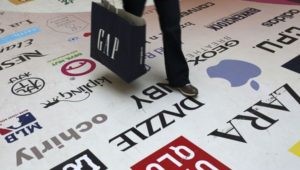
Foreign brands adaptation in China’s fast fashion market
As international fast fashion brands in China continue their strong growth, they are changing the landscape of the country’s commercial real estate sector. That brands that are succeeding in China are those who localize to the sales methods, sizing and fashion.
Zara: Speeding up e-commerce delivery in China
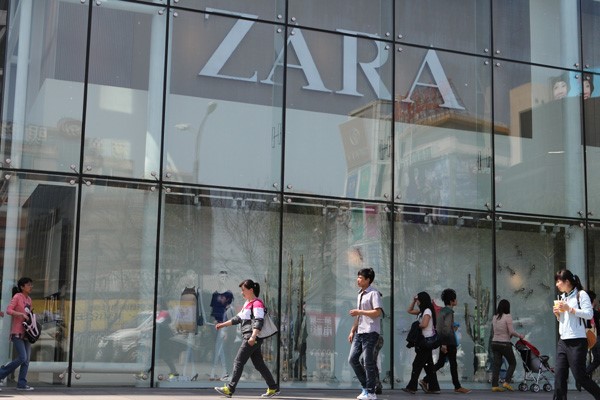
Zara, owned by Inditex, entered China in 2006 and has quickly risen to become the fourth highest selling brands in apparel and footwear. Inditex has 514 fashion stores in China and makes 7% of its sales here. The company represented 2.2% of all retail values, up from 1.7% in 2011. Realizing the importance of e-commerce, Zara opened a flagship store on Tmall.com in 2014 and operated its own Zara.cn website. However Zara’s China strategy hasn’t been without difficulty, in 2017 it closed its largest flagship store in Chengdu. In 2019, Inditex had over 600 stores in China, but this number is slowly declining. To combat this decline, Zara is planning on increasing its power in China by creating more in-store experiences and faster deliver. By partnering with JD.com, Zara will have one-day delivery in China, and plans to reduce it to same-day delivery in major cities. While other fast-fashion brands in China are focusing on co-branding, Zara is capitalizing on quick delivery.
Topshop: Withdrew in 2018
Topshop is a British high-street brand with prices comparable to that of Zara’s. It first opened a flagship store in Hong Kong in June 2013. Unlike Zara and H&M, however, Topshop chose to forgo opening a physical store first in China. It first launched an online shop on Shangping.com, a leading Internet retailer, to test the increasingly competitive market. It later opened up its first fashion store in China (Beijing) in August 2015. Topshop withdrew from China in 2018.
H&M: Experimental with co-branding
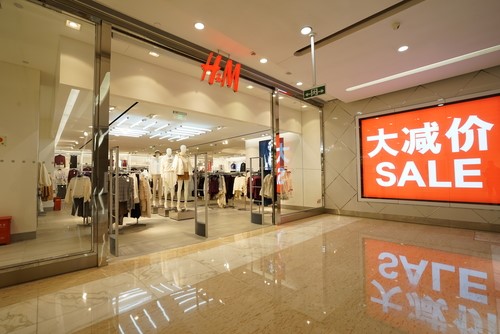
H&M entered China in 2007 is now the third largest brand in terms of sales in the fast fashion industry in China. Its parent company represented 1.7% of all retail values, up from 0.9% in 2011. H&M has saturated the first-tier cities, and CEO Tadashi Yanhai wants to expand into second and third-tier cities in China and eventually reach 3000 fashion stores in China. The company already has 299 stores and opened 91 stores in fiscal 2015. It planned to open up 70 new stores in 2016. Competition in large cities is fierce, but H&M is ahead of the competition in expanding to cities where similar brands are not yet. In 2019, China now accounts for 5% of H&M’s sales. Similar to Uniqlo, H&M has launched co-branded products with brands like VERSACE, Balmain, Isabel Marant, etc. The H&M and Moschino collaboration in 2018 received a lot of exposure, however H&M’s co-branded products have become less popular since the collaboration with Alexander Wang in 2014.
New Look
New Look exited China in 2018 and closed all 120 store locations in China. During its time in China, New Look remained a minor player, but the British brand had grand ambitions to expand in China. The CEO Anders Kristiansen is optimistic about the competitive Chinese market, stating, “This is a great story of a British brand which has been successful in China. There is an appetite for British fashion there.” However, due to lack of proper localization and increasing domestic competition, the British brand withdrew from China.
GAP: Collaborating with KOLs and youth culture

At the end of 2018, GAP had 170 store location in Mainland China, Taiwan and Hong Kong combined. However, is suffering from the same identity and branding issues it has in Western markets. Though it ran an advertising campaign featuring the Chinese idol Luhan to give the brand a more youthful feel to attract Chinese women. GAP’s share of retail values has increased from 0.2% in 2011 to 0.5% in 2015. In 2019, GAP collaborated with Strawberry music festival in China, in another attempt to attract a more youthful crowd.
Uniqlo: The leader of fast fashion in China
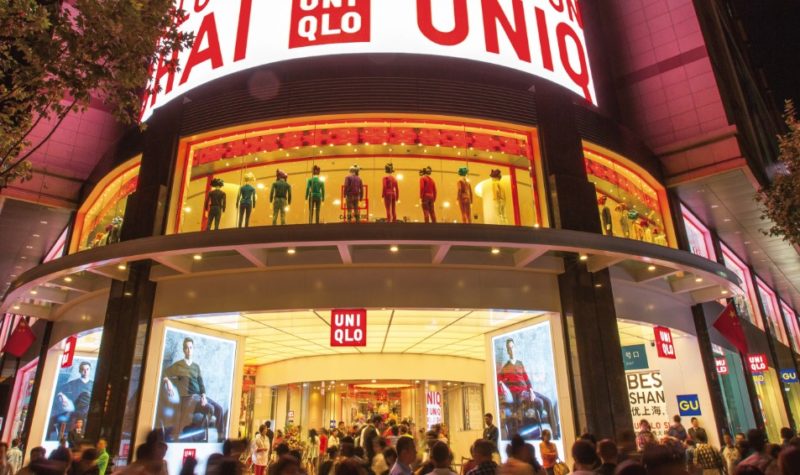
Uniqlo is one of the success stories in China’s fast fashion market. In 2018, 25% of Uniqlo’s sales came from China, with sales increasing by 16% from 2017 to 2018. Uniqlo is known for its simple and comfortable clothing providing more reliable basics rather than a constantly changing inventory. It is cited that one reason for Uniqlo’s success in China is due to the fact that you always know what to expect when entering a Uniqlo, making it a good option for both professional and casual basics available in many different colors, making it easy to keep long-term buyers. Whereas many fast fashion brands focus on women’s apparel, Uniqlo also has high sales for men and children, according to Tmall’s sales, about half of the top selling products are men’s .
In terms of marketing, Uniqlo has recently made bold moves in China. In early 2019, Uniqlo collaborated with the designer KAWS to release an exclusive clothing series. Co-branding and similar collaborations are increasingly common in China, and it is one way to show Chinese consumers the brand understands and embraces their interests. Uniqlo has also started endeavours in new retail, with a new ‘buy online, pick up in store’ policy integrated with Tmall, which was launched in 2016 for a seamless shopping experience.
Market potential for fast fashion in China
Despite the rise of the international fast fashion market, the fast fashion industry in China and the retail footwear market is still very fragmented. Consumers can purchase from a variety of specialty stores, department stores, and e-commerce sites, thus making it hard for a few brands to gain a dominant market share. Especially in second and third-tier cities where many international brands have not established a remarkable foothold, there is still plenty of opportunities for new brands to meet the growing demand for trendy fast fashion in China.
In 2020, domestic competition is becoming fierce, so foreign brands should put in the extra effort to understand Chinese consumers. Collaborations with Chinese tech companies, APPs and also with other popular designers and brands is how some foreign brands have succeeded in the fast fashion market in China. As tier-1 cities are becoming saturated with fast fashion retailors, low tier cities are a possible route for the growth of fast fashion in China.
Make the new economic China Paradigm positive leverage for your business


